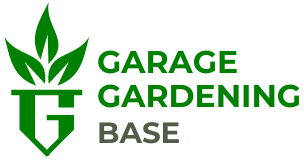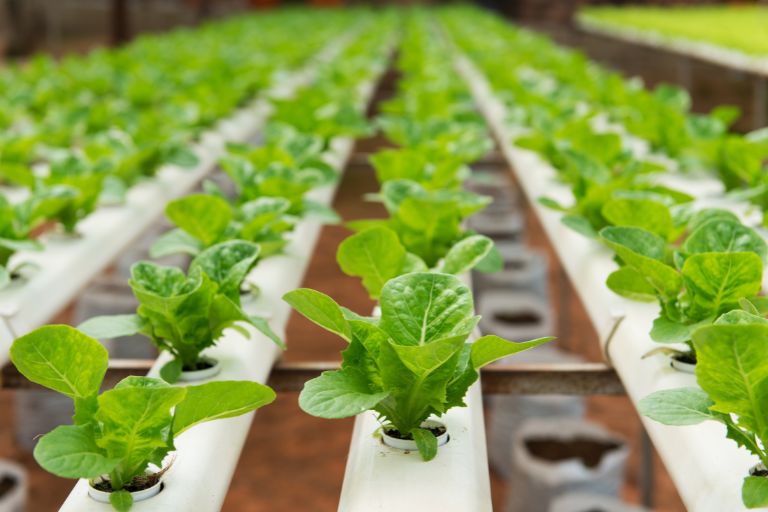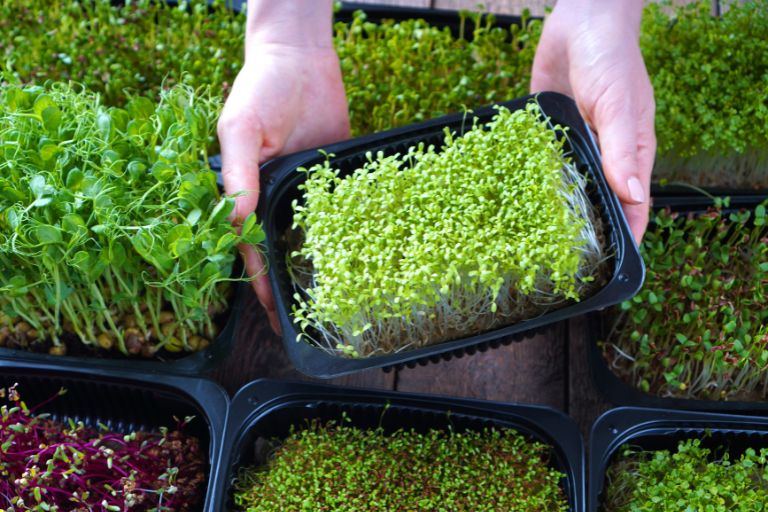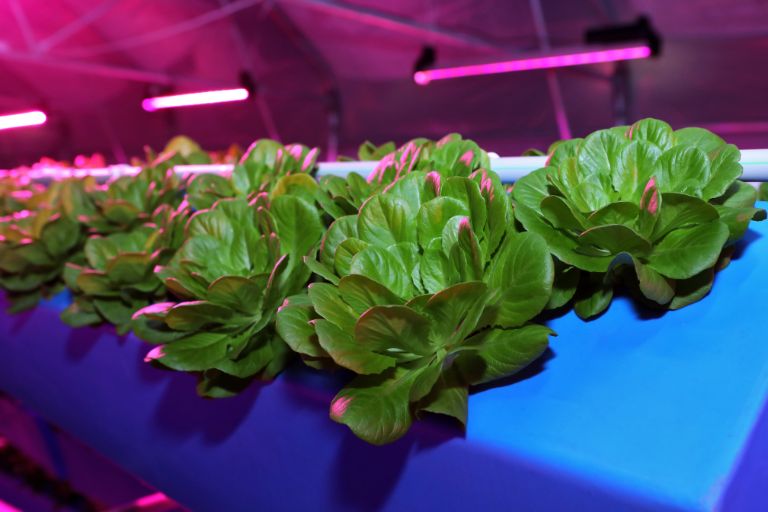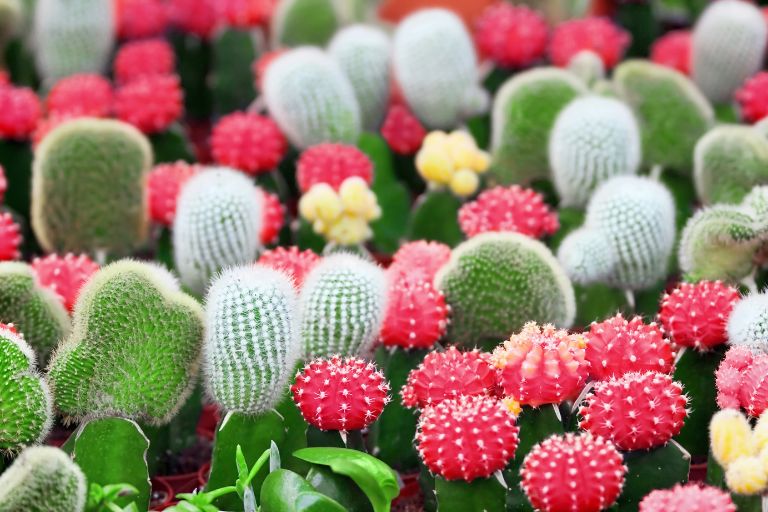Blooming Beauties: A Guide to Growing Flowers in Garages
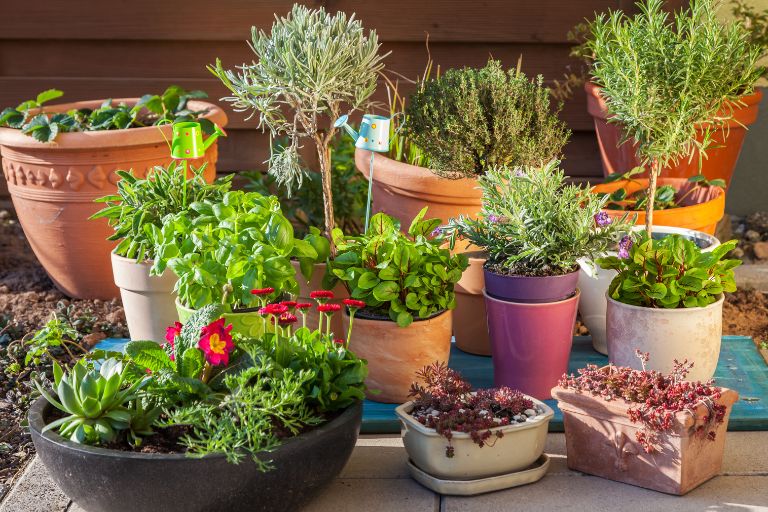
In today’s world, where space is at a premium and nature often takes a back seat to convenience, finding ways to bring the beauty of the outdoors indoors has become a growing desire for many. While traditional gardens may be out of reach for city dwellers or those with limited outdoor space, there is a hidden gem waiting to be discovered: the garage. Often overlooked as a mere storage space, the garage holds untapped potential as a haven for growing flowers, offering a unique opportunity to infuse homes with the splendour of nature.
In this article, we embark on a journey into the realm of garage gardening, where innovation meets practicality in the quest to create thriving indoor gardens. We’ll explore the possibilities and challenges of growing flowers in the garage and uncover the secrets to success in this unconventional yet rewarding endeavour. Whether you’re a gardening enthusiast looking to expand your green thumb repertoire or a homeowner looking to breathe life into a neglected space, join us as we unlock the transformative power of garage gardening and discover the beauty that lies within.
Introduction
Growing flowers in garages has a number of benefits that make it an attractive option for people who want to grow greenery in limited or unconventional spaces. The following is a quick overview of some of the main benefits:
Optimise space – Garages often serve as underutilised areas in homes, providing ample space to create indoor gardens without encroaching on living areas or outdoor landscapes. By repurposing the garage, individuals can maximise their available space and enhance the aesthetics of their living environment.
Protection from the elements – Unlike outdoor gardens, garage gardens are protected from extreme weather, pests and other environmental factors that can affect plant growth and health. This controlled environment provides a more stable and conducive environment for growing delicate flowers, ensuring optimal conditions for their development.
Year round growing – With the right lighting and climate control, garage gardens allow flowers to be grown all year round, regardless of seasonal changes or adverse weather conditions. This allows gardeners to enjoy a continuous supply of flowers and maintain their gardening passion throughout the year, regardless of external factors.
Privacy and security – For city dwellers or those living in close proximity to neighbours, garage gardening offers a level of privacy and security not always achievable with outdoor gardens. By growing flowers indoors, homeowners can enjoy the beauty of their garden without compromising their privacy or attracting unwanted attention.
Creative flexibility – Garage gardens offer endless opportunities for creative expression and design flexibility. Gardeners can experiment with different layouts, container styles and decorative elements to personalise their indoor oasis and showcase their unique gardening style. In addition, the controlled environment of the garage makes it possible to grow a wide range of flower varieties, including those that may not thrive outdoors.
Garage gardening offers a practical solution for people facing the challenge of limited outdoor space, providing an opportunity to indulge in gardening without the need for a large yard or garden. To address the constraints of limited outdoor space, here’s how garage gardening works:
Make use of under-utilised space – Garages are often overlooked as potential areas for gardening, yet they can provide valuable space for growing plants. By repurposing this underutilised space, people with limited outdoor space can create thriving indoor gardens without the need for additional land or garden plots.
Vertical gardening opportunities – In garages with limited floor space, vertical gardening techniques can be used to maximise the use of available space. Vertical planters, shelves or hanging baskets can be installed to grow flowers upwards, making effective use of vertical space and minimising the footprint required for gardening.
Protection from the elements – Unlike outdoor gardens, garage gardens are protected from adverse weather conditions, pests and other environmental challenges. This controlled environment allows individuals to maintain optimal growing conditions for their plants, ensuring their health and longevity regardless of external factors.
Year-round growing – With proper lighting and climate control, garage gardens allow flowers to be grown year-round, regardless of seasonal changes. This continuous growing season allows gardeners to enjoy flowers and gardening activities throughout the year, regardless of outdoor conditions.
Flexibility and adaptability – Garage gardening offers flexibility in plant selection and design, allowing individuals to tailor their indoor gardens to their preferences and available space. Container gardening, vertical gardening and creative layout designs can be used to maximise space and create visually appealing garden displays within the garage environment.
Privacy and security – For people living in urban areas or densely populated neighbourhoods, garage gardening offers a level of privacy and security not always achievable with outdoor gardens. By growing flowers indoors, homeowners can enjoy the beauty of their garden without sacrificing privacy or attracting unwanted attention from neighbours or passers-by.
Garage gardening offers a practical and versatile solution for people with limited outdoor space, providing opportunities for year-round cultivation, creative expression and gardening enjoyment within the confines of the home. Individuals can create vibrant indoor gardens that enhance their living environment and bring the beauty of nature indoors by utilising unused garage space and employing innovative gardening techniques.
Selecting Suitable Flower Varieties
When choosing flowers for your garage garden, it’s important to choose varieties that will thrive in an indoor environment with limited natural light and controlled temperatures. The following are some recommendations for flower species that are well suited to garage gardening:
African Violets (Saintpaulia spp.) – African violets are popular houseplants known for their colourful flowers and ease of care. They thrive in moderate to bright indirect light and prefer consistently moist, well-drained soil. African violets come in a wide range of colours and can add a vibrant touch to a garage garden.
Peace Lily (Spathiphyllum spp.) – Peace lilies are prized for their elegant white flowers and air-purifying qualities, making them ideal for indoor gardening. These low-maintenance plants thrive in low to medium light and prefer evenly moist soil. Peace lilies can tolerate the relatively low light levels typically found in garages and are excellent for beginners.
Spider plant (Chlorophytum comosum) – Spider plants are hardy and adaptable, making them perfect for interiors with limited natural light. They produce arching foliage and small white flowers that add a touch of greenery to garage spaces. Spider plants prefer bright, indirect light but can tolerate lower light levels. They thrive in well-drained soil and require minimal maintenance.
Snake plants (Sansevieria spp.) – Snake plants, also known as mother-in-law’s tongue, are known for their striking upright foliage and air-purifying abilities. These hardy plants thrive in low to medium light and are very tolerant of neglect, making them ideal for garage environments. Snake plants prefer dry soil and can survive for long periods without water.
Pothos (Epipremnum aureum) – Pothos, also known as Devil’s Ivy, is a popular trailing plant valued for its lush foliage and low maintenance requirements. Pothos plants thrive in low to medium light and can tolerate occasional neglect. They prefer well-drained soil and benefit from regular watering when the top inch of soil feels dry.
Begonias (Begonia spp.) – Begonias are prized for their colourful flowers and attractive foliage, making them a popular choice for indoor gardens. Tuberous begonias in particular thrive in partial shade and prefer consistently moist soil. They can be grown as houseplants or in containers to add a splash of colour to the garage.
Orchids (family Orchidaceae) – Orchids are exquisite flowering plants prized for their stunning flowers and graceful appearance. While some orchid species require special care, many varieties, such as Phalaenopsis orchids, can thrive indoors with moderate light and consistent humidity. Orchids need a well-drained orchid mix and benefit from regular watering and fertilising.
These flowering species are well suited to indoor garage gardening, providing beauty, colour and foliage interest while thriving in typical indoor conditions. When selecting plants for your garage garden, it’s important to take into account light levels, temperature and humidity, and to give them the care they need to stay healthy and vibrant.
There are a number of considerations to be taken into account when choosing flowers for a garage garden, including available space, light conditions and climate. The following are some of the key factors to consider:
Space availability
– Evaluate the space available in your garage and determine the amount of room you have for gardening activities.
– Consider using vertical space with wall shelving, hanging baskets or trellises to maximise space.
– Choose compact or dwarf varieties of flowers that won’t take up too much space and are easy to grow in containers or small beds.
Light conditions
– Assess the amount of natural light in your garden, taking into account factors such as orientation, windows and obstructions that may affect light penetration.
– Choose flowers that are suited to the available light conditions. For garages with limited natural light, choose shade-tolerant varieties such as peace lilies, snake plants or begonias. For garages with plenty of natural light, consider sun-loving flowers such as African violets, orchids or geraniums.
– Supplemental lighting, such as LED grow lights, can be used to provide extra illumination for plants in areas with insufficient natural light.
Climate control
– Evaluate the temperature and humidity levels in your garage and consider how they may affect plant growth and health.
– Choose flowers that can adapt to an indoor environment with controlled temperatures and moderate humidity. Tropical plants such as orchids, bromeliads and spider plants are well suited to garage gardening conditions.
– Use temperature and humidity monitors to ensure that conditions remain within the optimum range for plant growth, especially during extreme weather fluctuations.
Seasonal considerations
– Consider the seasonal climate variations in your area and how they may affect garage gardening activities.
– Choose flowers that will thrive year-round indoors, providing continuous blooms and foliage interest regardless of outdoor weather conditions.
– Plan your flower selections based on seasonal availability and growth patterns to ensure a diverse and visually appealing garden throughout the year.
Maintenance requirements
– Consider the time and effort required to maintain your garage garden and choose flowers that match your maintenance capabilities.
– Choose low-maintenance or drought-tolerant varieties that require minimal watering, pruning and fertilising, especially if you have limited time for gardening.
– Incorporate self-watering systems, automatic timers or mulching techniques to streamline maintenance and ensure optimum plant health with minimal effort.
Setting up your Garage Garden
Efficiently organising garage space to accommodate flower pots or containers requires careful planning and use of available resources. To help you maximise your space and create an organised and functional garage garden, here are some tips:
Get rid of clutter – Start by clearing out and organising your garage to create a clean and tidy space for gardening activities. Remove any unnecessary items, tools or equipment to make room for your pots and containers.
Use vertical space – Make use of vertical space in the garage by installing wall shelves, racks or pegboards to store flower pots and gardening supplies. Hanging baskets or vertical gardening systems can also be used to maximise space and display plants vertically.
Invest in shelving – Install freestanding shelving or storage racks to create additional storage space for flower pots, containers and gardening tools. Adjustable shelves allow you to customise the storage configuration to accommodate different pot sizes and heights.
Use trolleys or platforms – Use trolleys or platforms to create mobile gardening stations that can be easily moved around the garage as needed. These can be used as work surfaces for potting plants, organising supplies or carrying heavy pots.
Group similar items together – Organise pots, containers and gardening tools into groups based on size, type or function to streamline access and maintenance. Keep frequently used items within easy reach and designate specific areas for different gardening tasks.
Label and identify – Label flower pots, containers and storage bins to easily identify contents and keep track of your gardening inventory. Use transparent bins or containers to store smaller items and keep them visible and accessible.
Create a potting bench – Create a special potting bench or work area in the garage for repotting plants, transplanting seedlings, and other gardening tasks. Equip the potting bench with essential tools, potting soil and supplies to make gardening activities more convenient.
Optimise floor space – Arrange pots and containers on the garage floor in an organised manner that allows for easy walking and manoeuvring. Group larger pots in designated areas to create a cohesive and visually appealing display.
Consider hanging solutions – Hang pots or containers from the ceiling or rafters using hooks, brackets or hanging baskets to free up floor and shelf space. Hanging plants can add vertical interest to the garage and maximise growing space.
Maintain accessibility – Make sure pots, containers and gardening tools are easily accessible and within reach for watering, pruning and maintenance. Avoid overcrowding or blocking access to essential items by keeping pathways clear and organising items efficiently.
Choosing the right containers, soil and drainage system is crucial to the success of your garage garden. The following is a guide to help you make the right choices:
Containers
– Choose containers that are appropriate for the size and growth habits of your plants. Make sure they have adequate drainage holes to prevent waterlogging.
– Consider the material of the pots. Options include plastic, ceramic, terracotta, metal or fabric pots. Each material has its advantages, such as durability, breathability or aesthetics.
– Choose containers that are deep enough and wide enough to accommodate your plants’ root systems and provide room for growth. Make sure they are sturdy and stable to support the weight of the soil and plants.
Soil
– Choose a good quality potting mix specifically formulated for container gardening. Avoid using garden soil as it may be too dense and prone to compaction in containers.
– Look for potting mixes that are well-draining and light and contain ingredients such as peat moss, perlite, vermiculite or compost.
– Consider the specific needs of your plants when choosing soil. Some plants may prefer a more acidic or alkaline mix, while others will thrive in a nutrient-rich mix.
Drainage systems
– Ensure proper drainage in your containers by using pots with drainage holes in the bottom. This will prevent water from collecting around the roots and causing root rot.
– Elevate containers slightly from the ground using pot feet, bricks or saucers to allow excess water to drain freely.
– Use a layer of gravel or broken pottery at the bottom of the container to improve drainage and prevent soil from clogging the drainage holes.
– Monitor drainage regularly and adjust watering as needed to maintain optimal soil moisture levels for your plants.
Additional tips
– Consider using self-watering containers or watering systems with built-in reservoirs to help maintain consistent soil moisture levels.
– Mulch the soil surface with organic material such as wood chips, straw or bark to conserve moisture, regulate soil temperature and suppress weed growth.
– Rotate containers regularly to ensure even exposure to light and prevent uneven growth.
– Clean and sterilise containers between uses to prevent the spread of disease and pests.
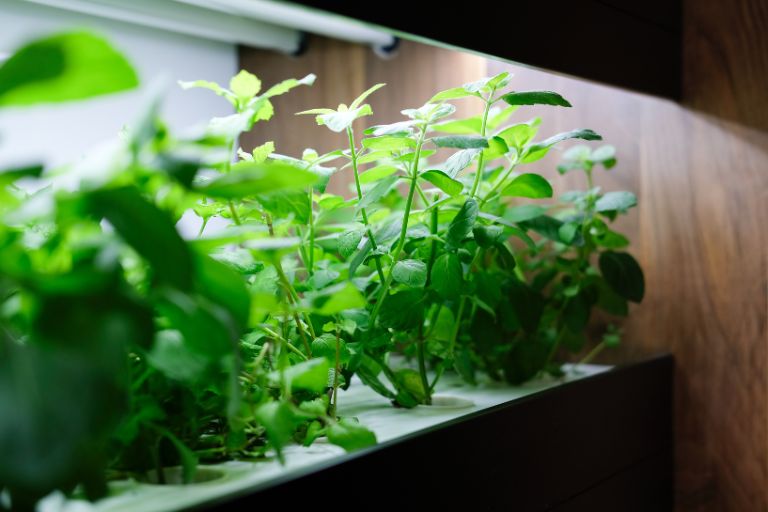
Optimising Light and Temperature
Providing adequate light is essential to support healthy flower growth in a garage garden, especially as natural light may be limited. The following are some strategies to ensure your flowers get the light they need:
Assess natural light – Determine the natural light available in your garage by observing the direction of windows, skylights or other openings. Note the intensity and duration of sunlight throughout the day to identify areas with the best light exposure.
Supplemental lighting – Install supplemental lighting, such as LED grow lights or fluorescent bulbs, to supplement natural light. Position the lights above or around your plants to ensure even coverage and adequate intensity. Choose lights with a spectrum that mimics natural sunlight, including wavelengths suitable for plant growth (blue and red).
Light placement – Position your plants closer to light sources to maximise their exposure to artificial or natural light. Adjustable luminaires or shelves can be used to raise or lower lights as needed to accommodate plant height and growth patterns.
Lighting hours – Maintain a consistent light schedule for your plants to ensure they receive the appropriate amount of light each day. Most flowering plants require 12-16 hours of light per day for optimum growth. Use timers to automate lighting schedules and ensure consistent light levels even when you’re not available to manually control the lights.
Reflective surfaces – Place reflective materials such as mirrors, aluminium foil or white-painted surfaces around your plants to reflect light and improve the overall distribution of light. This can help maximise the efficiency of your lighting setup and increase light penetration to lower foliage.
Rotate plants – Rotate your plants regularly to ensure even light exposure on all sides. This prevents plants from leaning or stretching towards the light source and promotes balanced growth and development.
Monitor light levels – Use a light meter or smartphone app to monitor light levels in your garage garden and adjust lighting accordingly. Aim for at least 1000-3000 lumens per square foot for most flowering plants.
Optimise natural light – Take advantage of natural light by placing plants near windows or skylights where available. Consider using translucent curtains or blinds to diffuse harsh sunlight and prevent damage to delicate foliage.
When natural light is insufficient for healthy flower growth in a garage garden, supplemental lighting becomes crucial. To ensure your flowers get the light they need, here are some suggestions for supplemental lighting options, including grow lights:
LED Grow Lights
– LED grow lights are highly efficient and versatile options for supplemental lighting in garage gardens. They produce specific wavelengths of light that are optimal for plant growth, including red and blue spectra.
– Choose full-spectrum LED grow lights to provide a balanced light spectrum similar to natural sunlight, promoting healthy flowering and overall plant growth.
– Choose adjustable LED grow lights with customisable intensity and colour settings so you can tailor light levels to the specific needs of your flowers.
Fluorescent Grow Lights
– Fluorescent grow lights, including T5, T8 and compact fluorescent lamps (CFLs), are affordable and widely available options for garage gardening.
– T5 fluorescent lamps are particularly popular for indoor gardening due to their high efficiency and low heat output. They produce a broad spectrum of light that is suitable for promoting flower development.
– Arrange fluorescent lamps in luminaires with reflectors to maximise light output and coverage. Position the lights close to your plants to ensure adequate intensity and even distribution.
High-intensity discharge (HID) lighting
– HID lights, such as metal halide (MH) and high pressure sodium (HPS), are powerful options for supplemental lighting in larger garage gardens or commercial installations.
– Metal halide bulbs emit a blue-white light spectrum that is ideal for promoting vegetative growth and compact, bushy plants. High-pressure sodium bulbs emit a reddish-orange spectrum that is beneficial for flowering and fruiting stages.
– HID lamps should be used with caution due to their high heat output and energy consumption. Ensure proper ventilation and cooling to prevent overheating and maintain optimum growing conditions.
Induction grow lights
– Induction grow lights are an energy-efficient and long-lasting alternative to traditional grow lights. They produce a balanced spectrum of light suitable for promoting healthy flower growth.
– Induction grow lights generate minimal heat, making them suitable for use in enclosed garage environments with limited ventilation.
– Although less common than other types of grow lights, induction grow lights offer a sustainable and environmentally friendly lighting solution for garage gardening.
Adjustable track lighting
– Install adjustable track lights equipped with PAR (Photosynthetically Active Radiation) bulbs to provide targeted lighting for specific plant areas or individual pots.
– PAR bulbs emit wavelengths of light optimised for photosynthesis, promoting healthy plant growth and flowering. Adjust the position and angle of the tracks to direct light where it’s needed most.
When choosing supplementary lighting options for your garage garden, consider factors such as light intensity, spectrum, energy efficiency and cost effectiveness. Choose lighting solutions that best suit your budget, space limitations and the specific needs of your flowering plants. Experiment with a variety of lighting setups and configurations to find the optimal lighting environment to promote healthy flower growth and maximise the productivity of your garden.
Regulating the temperature and humidity levels in the garage environment is crucial to creating optimal growing conditions for your flowers. The following are some tips to help you maintain the ideal temperature and humidity levels in your garage garden:
Insulation and ventilation
– Insulate your garage to help regulate temperature fluctuations and minimise heat loss or gain. Use weather stripping around doors and windows, and consider adding insulation to walls and ceilings.
– Install ventilation systems, such as exhaust fans, vents or louvers, to promote air circulation and prevent stagnant air. This will help regulate temperature and humidity levels and prevent the build-up of excess moisture.
Heating and cooling
– Use space heaters or portable electric heaters to maintain consistent temperatures during colder months. Position heaters strategically to distribute heat evenly throughout the garage.
– Install ceiling fans or oscillating fans to improve air circulation and prevent temperature stratification. Fans help to distribute warm air in winter and cool air in summer, promoting even temperature distribution.
– Consider installing an air conditioner or evaporative cooler to regulate temperatures during hot summer months. Air conditioning helps maintain cooler temperatures and reduces humidity levels, creating a more comfortable environment for plants.
Control humidity
– Monitor the humidity levels in your garage with a hygrometer or moisture meter. Aim for humidity levels between 40% and 60% for most flowering plants, adjusting levels as needed based on plant requirements.
– Increase humidity levels by placing water bowls or humidifiers near plants to provide additional moisture. Regular misting of plants with water can also help to increase humidity levels in the immediate area.
– Reduce humidity levels by improving ventilation and air circulation to reduce moisture build-up. Use dehumidifiers to remove excess moisture from the air, especially in humid weather or in enclosed garage spaces.
Thermal mass
– Use thermal mass materials such as concrete, brick or stone to stabilise temperature fluctuations in your garage. These materials absorb and release heat slowly, helping to maintain more consistent temperatures over time.
– Place potted plants near thermal mass surfaces to take advantage of their heat-retaining properties, especially during colder periods when temperatures drop at night.
Shade and insulation
– Provide shade for your garage garden during hot summer months to prevent overheating and sunburn. Use shading materials such as shade cloth, curtains or blinds to filter out excessive sunlight and reduce temperature extremes.
– Insulate windows and garage doors to minimise heat transfer and regulate indoor temperatures. Use reflective or insulating materials to retain heat in winter and block heat in summer, improving overall energy efficiency.
Watering and Maintenance
Properly watering indoor flowers is essential for their health and vitality, but it can be difficult to find the right balance between overwatering and underwatering. The following are some best practices to help prevent both problems:
Know your plants – Different plants have different watering requirements. Research the specific requirements of each type of flower in your garage garden to understand how much water they need and how often they should be watered.
Check soil moisture – Before watering, check the moisture level of the soil by inserting your finger into the soil to the first knuckle. If the soil feels dry at this depth, it’s time to water. If it still feels moist, wait a day or two before checking again.
Water thoroughly – When watering, be sure to thoroughly moisten the entire root ball of the plant. Water until excess water begins to drain from the bottom of the container, ensuring that the roots have access to moisture throughout the soil volume.
Use the correct watering technique – Avoid watering too quickly or forcefully as this can cause run-off and uneven distribution. Instead, water gently and evenly around the base of the plant, allowing the water to penetrate the soil gradually.
Water at the right time – Water your houseplants in the morning whenever possible. This allows excess moisture to evaporate during the day and reduces the risk of fungal disease caused by damp conditions overnight.
Consider self-watering systems – Self-watering pots or systems with built-in reservoirs can help regulate moisture levels and prevent overwatering. These systems provide a steady supply of water to plants as needed, reducing the risk of both overwatering and underwatering.
Monitor drainage – Ensure that your containers have adequate drainage holes to allow excess water to escape. Check drainage trays or saucers regularly and empty them if they accumulate excess water to prevent root rot and other moisture-related problems.
Adjust watering frequency – Pay attention to environmental factors such as temperature, humidity and seasonal changes, as these can affect the rate at which your plants use water. Adjust your watering frequency as conditions change.
Consider plant size and stage of growth – Larger plants or those in active growth stages may require more frequent watering than smaller or dormant plants. Adjust your watering schedule based on the size and stage of growth of your indoor flowers.
Monitor plant response – Monitor your plants closely for signs of over or under watering, such as wilting, yellowing leaves, or soil that feels consistently moist or dry. Adjust your watering practices based on the specific needs and reactions of your plants.
Fertilising, pruning and pest control are essential aspects of maintaining healthy indoor flowers in a garage gardening environment. The following is some advice tailored to each of these areas:
Fertilising
– Use a balanced, water-soluble fertilizer formulated for flowering plants to provide essential nutrients to your indoor flowers. Follow the manufacturer’s instructions for dilution and application rates.
– Feed your plants regularly during the growing season, usually every 2-4 weeks, to promote healthy growth and flowering. Reduce or eliminate fertilisation during the dormant or resting periods.
– Avoid over-fertilising as this can lead to nutrient imbalances, salt build-up in the soil and potential damage to plant roots. – Use a diluted fertiliser solution and apply it evenly to the soil around the base of the plant.
– Consider using organic fertilisers or slow release fertilisers for a more gradual and sustained release of nutrients. These options provide a more sustainable and environmentally friendly approach to fertilising.
Pruning
– Regular pruning will help maintain the shape, size and overall health of your houseplants. Remove dead or diseased foliage, spent flowers and leggy growth to encourage new growth and flowering.
– Use clean, sharp pruning shears or scissors to make precise cuts and minimise damage to the plant. Disinfect pruning tools between uses to prevent the spread of disease or pests.
– Prune your plants selectively to remove damaged or overcrowded branches, improve air circulation and promote better light penetration. This will help prevent fungal diseases and pest infestations in your garage garden.
– Pay attention to the growth habits of each plant species and prune accordingly. Some plants may require regular pinching or shaping to maintain a compact and bushy form, while others may benefit from more extensive pruning to rejuvenate growth.
Pest management
– Check your indoor flowers regularly for signs of pest infestation, such as yellowing leaves, distorted growth or visible insects on the foliage.
– Practice good hygiene by keeping the garage environment clean and free of litter, fallen leaves and plant debris that can harbour pests and diseases.
– Use natural pest control methods such as insecticidal soaps, neem oil or horticultural oils to treat common pests such as aphids, spider mites and whiteflies. Apply treatments according to the manufacturer’s instructions and avoid spraying in direct sunlight or extreme temperatures.
– Introduce beneficial insects such as ladybirds, lacewings or predatory mites to help control pest populations naturally. These insects prey on common garden pests and can help keep pest populations in check without the need for chemical pesticides.
– Consider using physical barriers such as row covers, netting or mesh screens to protect your indoor flowers from pest damage while still allowing air and light to pass through.
Creative Design and Decor Ideas
Incorporating aesthetic elements into your garage garden space can transform it into a visually pleasing and inviting environment. To enhance the aesthetic appeal of your garage garden, the following are a few inspirational ideas:
Vertical gardens – Create a vertical garden using wall planters, trellises or living walls to maximise space and add vertical interest to your garage garden. Plant a variety of flowering vines, trailing plants and cascading foliage to create a lush and vibrant display.
Decorative containers – Choose decorative containers or planters in a variety of sizes, shapes and materials to add visual interest to your garage garden. Choose from colourful ceramic pots, rustic wooden boxes or modern metal containers to suit your aesthetic preferences and style.
Garden art and sculptures – Incorporate garden art and sculptures into your garage garden space to add personality and charm. Choose sculptures, statues or decorative accents that reflect your interests and complement the overall theme of your garden.
Water features – Install a small water feature such as a fountain, pond or water wall to create a soothing atmosphere and enhance the sensory experience of your garage garden. The sound of flowing water adds tranquillity and relaxation to the space.
Pathways and paving – Create pathways or paved areas using stepping stones, gravel or decorative tiles to define the layout of your garage garden and provide easy access to different areas. Incorporate curves, patterns or designs to add visual interest and break up the monotony of the space.
Lighting design – Install outdoor lighting such as string lights, lanterns or solar-powered path lights to illuminate your garage garden and create a magical atmosphere after dark. Use lighting strategically to highlight focal points, pathways and garden features.
Vertical structures – Incorporate vertical structures such as arbors, pergolas or trellises into your garage garden to add architectural interest and provide support for climbing plants. Grow flowering vines or climbers on these structures to create a beautiful backdrop for your garden.
Seasonal decor – Add seasonal decorations such as wreaths, garlands or seasonal planters to your garage garden to celebrate holidays and special occasions throughout the year. Choose seasonal flowers, foliage and decorative elements to create a festive and inviting atmosphere.
Seating areas – Create cosy seating areas or outdoor lounges in your garage garden to provide a comfortable place to relax and enjoy the beauty of your surroundings. Use weatherproof furniture, cushions and accessories to enhance comfort and style.
Themed gardens – Create a themed garden based on your interests, hobbies or favourite plants to add personality and character to your garage garden. Whether it’s a butterfly garden, herb garden or succulent garden, choose plants and features that reflect your unique style and passions.
To enhance the aesthetic appeal of your garage garden, the following are some suggestions for decorative containers, trellises and vertical gardening solutions:
Decorative pots
Colourful ceramic pots – Choose from vibrant ceramic pots in a variety of shapes, sizes and colours to add a pop of colour to your garage garden. Mix and match different shades to create a visually stunning display.
Rustic wooden boxes – Repurpose old wooden crates or boxes into charming planters for a rustic, farmhouse-inspired look. Stain or paint the crates to match your garden decor and fill them with flowering plants or herbs.
Modern metal planters – Opt for sleek and stylish metal planters in contemporary designs to add a touch of sophistication to your garage garden. Choose stainless steel, aluminium or Corten steel planters for a modern aesthetic.
Hanging baskets – Hang decorative hanging baskets filled with trailing plants or flowers from hooks or brackets attached to the walls or ceiling of your garage. Use woven baskets, wire baskets or decorative metal baskets for added visual interest.
Trellises
Wooden trellises – Install wooden trellises against the walls or freestanding in your garage garden to support climbing plants such as roses, jasmine or clematis. Choose decorative lattice or arched designs for added charm.
Metal trellises – Choose metal trellises in ornate scrollwork or geometric patterns to add elegance and sophistication to your garage garden. Place metal trellises in strategic locations to create focal points or vertical interest.
DIY trellis – Get creative and make your own trellis from bamboo poles, copper tubing or reclaimed materials. Customise the design and size to suit your space and preferences, and train climbing plants to grow on the trellis for a personal touch.
Vertical Garden Solutions
Wall mounted planters – Install wall-mounted planters or vertical gardening systems on the walls of your garage to maximise space and create a lush green backdrop. Choose modular systems with adjustable shelves or pockets for flexibility.
Living walls – Create a stunning living wall or vertical garden with a frame or structure filled with pockets or planters. Plant a variety of flowering plants, succulents or herbs to create a dynamic and visually appealing display.
Hanging gardens – Hang decorative hooks, brackets or rails from the ceiling or walls of your garage to suspend hanging baskets, planters or shelves. Arrange plants at different heights to add dimension and drama to your vertical garden.
Combination solutions
Trellis planter boxes – Combine trellises with planter boxes to create functional and decorative vertical gardening solutions. Install trellises with attached planter boxes or planters on top of the trellis to create a cohesive and integrated design.
Tiered plant stands – Use tiered plant stands or shelving to create multi-level displays for your potted plants. Arrange plants of different heights and sizes on each level to create visual interest and maximise space.
Overcoming Challenges
Garage gardening presents unique challenges due to the indoor environment and limited space. The following are some common challenges associated with garage gardening and effective ways to overcome them:
Limited natural light
Challenge – Garages often have limited access to natural light, which can affect plant growth and flowering.
Solution – Supplement natural light with artificial light using LED grow lights or fluorescent lights. Position the lights strategically to ensure even coverage and adjust the intensity and duration of the light to suit the needs of your plants.
Temperature fluctuations
Challenge – Garages can experience temperature fluctuations, especially during extreme weather, which can affect plant health.
Solution – Use heaters, fans or portable air conditioners to regulate temperature and maintain a consistent climate in the garage. Insulate windows and doors to minimise heat loss or gain, and provide thermal mass materials for temperature stability.
Limited space
Challenge – Space constraints in garages can limit the number and size of plants you can grow, as well as the layout of your garden.
Solution – Maximise vertical space with wall-mounted planters, trellises or shelving to create a vertical garden. Use hanging baskets, tiered plant stands or vertical gardening systems to optimise space and expand your gardening area.
Poor ventilation
Challenge – Inadequate ventilation in garages can lead to stagnant air, moisture build-up and poor air circulation, which can encourage fungal disease or pest infestation.
Solution – Install exhaust fans, vents or windows to improve air circulation and promote ventilation in the garage. Use oscillating fans or ceiling fans to increase airflow and prevent moisture build-up.
Pest infestation
Challenge – Garages can attract pests such as insects, rodents or fungi, which can damage plants and affect their growth.
Solution – Practice good hygiene by keeping the garage clean and free of debris, leaves and standing water. Use natural pest control methods such as insecticidal soaps, neem oil or beneficial insects to manage pest infestations without resorting to chemical pesticides.
Soil quality
Challenge – Soil quality in containers or raised beds can deteriorate over time, leading to nutrient depletion or compaction.
Solution – Use high-quality potting mixes or soilless growing media specifically formulated for container gardening. Amend the soil with organic matter, compost or slow-release fertiliser to improve nutrient levels and soil structure.
Watering challenges
Challenge – Watering houseplants in garages can be challenging due to limited access to water sources and proper drainage.
Solution – Use self-watering containers or drip irrigation systems with built-in reservoirs to regulate soil moisture and ensure consistent watering. Monitor soil moisture levels regularly and adjust watering practices based on plant needs and environmental conditions.
Experiment with different solutions and techniques to find what works best for your unique garden space and conditions.
The following are troubleshooting tips for common garage gardening problems:
Insufficient light
Problem – Plants show stunted growth, leggy stems or pale leaves due to lack of light.
Tips
– Increase light exposure by adding supplemental lighting with LED grow lights or fluorescent bulbs.
– Position plants closer to windows or skylights to maximise natural light.
– Rotate plants regularly to ensure even light distribution and prevent uneven growth.
– Choose shade-tolerant plants or move light-sensitive plants to areas with better light conditions.
Pest infestation
Problem – Plants show signs of pest damage such as holes in leaves, yellowing foliage or visible insects.
Tips
– Identify the type of pest causing the infestation and research appropriate control methods.
– Use natural pest control methods such as insecticidal soaps, neem oil or beneficial insects to manage pest populations.
– Quarantine infested plants to prevent the spread of pests to other plants.
– Maintain good hygiene practices by removing litter, leaves and plant debris to eliminate pest breeding sites.
Temperature Fluctuations
Problem – Plants show stress symptoms such as wilting, leaf curling or leaf scorching due to temperature extremes.
Tips
– Install temperature regulating devices such as heaters, fans or portable air conditioners to maintain a stable climate.
– Insulate windows and doors to minimise heat loss or gain and provide thermal mass materials for temperature stability.
– Monitor temperature fluctuations regularly and adjust heating or cooling systems as needed to maintain optimal growing conditions.
Soil moisture issues
Problem – Plants show symptoms of over or under watering, such as yellowing leaves, root rot or wilting.
Tips
– Check soil moisture regularly using a moisture meter or by feeling the soil with your fingers.
– Adjust watering frequency and amount according to plant needs, environmental conditions and soil moisture.
– Improve drainage by using well-draining potting mix, adding drainage holes to containers, or elevating pots on saucers or feet to prevent waterlogging.
Nutrient deficiencies
Problem – Plants show symptoms of nutrient deficiency such as yellowing leaves, stunted growth or poor flowering.
Tips
– Test soil pH and nutrient levels using a soil test kit to identify deficiencies or imbalances.
– Amend soil with organic matter, compost or balanced fertiliser to replenish nutrients and improve soil fertility.
– Use foliar sprays or liquid fertilisers to provide quick nutrient boosts to plants showing signs of deficiency.
Garage gardening presents a unique set of challenges, from inadequate light and temperature fluctuations to pest infestations and soil moisture issues. However, with careful planning, diligent maintenance and the implementation of effective troubleshooting techniques, these challenges can be overcome to create a thriving and beautiful indoor garden space.
Gardeners can create an optimal environment for plant growth and flowering in their garage gardens by maximising available light through supplemental lighting, regulating temperature and humidity levels, and effectively managing pests and nutrients. In addition, incorporating aesthetic elements such as decorative containers, trellises and vertical gardening solutions adds visual interest and personality to the space, transforming it into a welcoming oasis.
After all, garage gardening is an opportunity to grow plants, experiment with different species and enjoy nature’s beauty in an enclosed space. With patience, dedication and a little creativity, garage gardeners can create a green oasis that brings joy, tranquillity and a touch of nature’s splendour into their everyday lives.
